Public Art Proposal Display
Art Proposals for Treasure Island Water Resource Recovery Facility
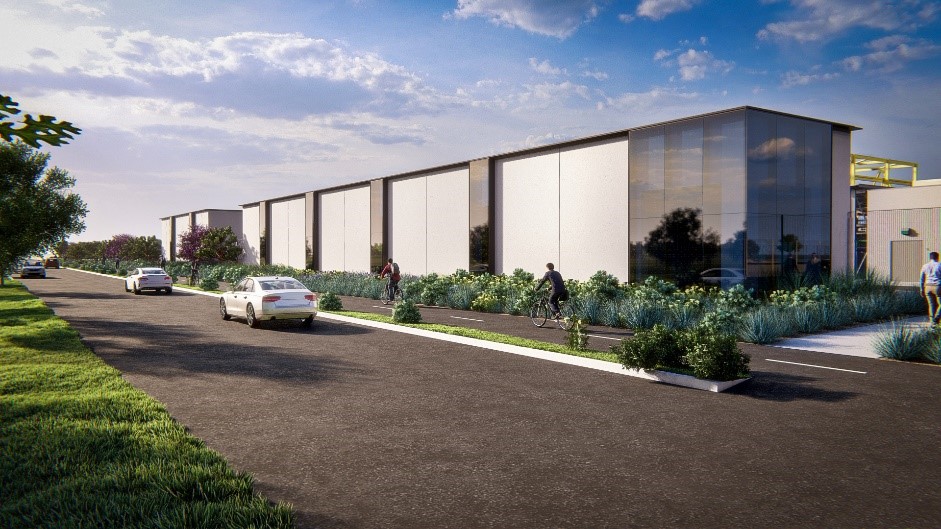 The San Francisco Arts Commission is conducting a review process to choose an artist to create a work for the new Treasure Island Water Resource Recovery Facility (TIWRRF). The artwork should connect viewers to an understanding of the flow and importance of water and wastewater in the TIWRRF, on and around the island, and throughout the Bay Area, more broadly; and highlight Treasure Island’s history, ecology, natural and marine environment, and the environmental stewardship of the SF Public Utilities Commission. Four artists were chosen as finalists by an Artist Review Panel to design site-specific proposals for this artwork opportunity: Cheryl Derricotte, Ron Moultrie Saunders, Alyson Shotz, and David Wilson.
The San Francisco Arts Commission is conducting a review process to choose an artist to create a work for the new Treasure Island Water Resource Recovery Facility (TIWRRF). The artwork should connect viewers to an understanding of the flow and importance of water and wastewater in the TIWRRF, on and around the island, and throughout the Bay Area, more broadly; and highlight Treasure Island’s history, ecology, natural and marine environment, and the environmental stewardship of the SF Public Utilities Commission. Four artists were chosen as finalists by an Artist Review Panel to design site-specific proposals for this artwork opportunity: Cheryl Derricotte, Ron Moultrie Saunders, Alyson Shotz, and David Wilson.
Please take a few minutes to review these artwork proposals and provide feedback on the public comment forms in the exhibition notebook, located near this display or at the reception/security desk. Public comments will be considered by the Review Panel as part of the Final Review Panel meeting where the Panel will recommend one proposal for implementation. Please note that public comments do not constitute a vote.
The Final Review Panel meeting will take place remotely. All Artist Review Panel meetings are open to the public. An agenda for the meeting will be posted 72 hours in advance of the meeting on SFAC’s website under the Public Meeting section: www.sfartscommission.org
The proposals are available online at www.sfartscommission.org/calendar, in the Public Art Proposal Display section. Comments may be emailed to sfacpublicartcomment@sfgov.org by Wednesday, June 25, 2025 at 5:00 p.m.
For more information, please contact: sfacpublicartcomment@sfgov.org, or (415) 252-2100. Materiales traducidos están disponibles para usted de manera gratuita. Para asistencia, notifique a sfacpublicartcomment@sfgov.org, or (415) 252-2100. 我們將為閣下提供免費的書面翻譯資料。 如需協助,sfacpublicartcomment@sfgov.org, or (415) 252-2100. Ang mga materyales na nakasalin sa ibang wika at ang mga serbisyong tagapagsalin sa wika ay walang bayad. Para sa tulong, maaring i-contact si sfacpublicartcomment@sfgov.org, or (415) 252-2100.
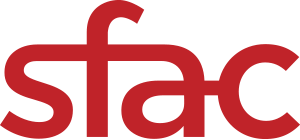
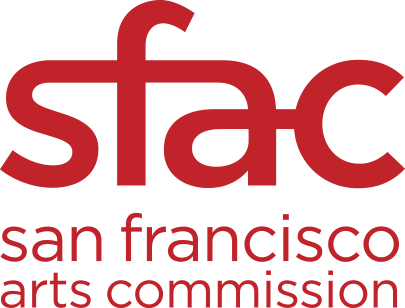

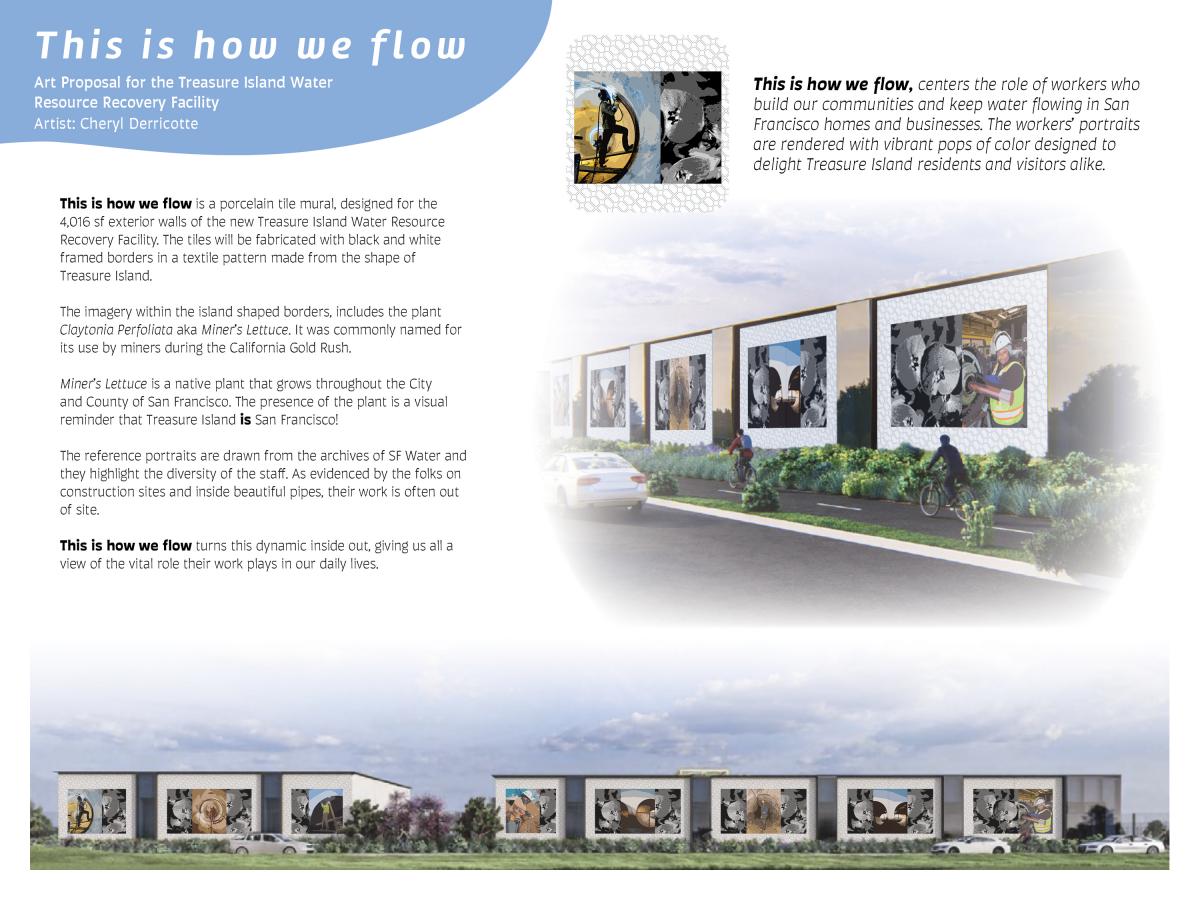 This is how we flow is a porcelain tile mural, designed for the 4,016 sf exterior walls of the new Treasure Island Water Resource Recovery Facility. The tiles will be fabricated with black and white framed borders in a textile pattern made from the shape of Treasure Island.
This is how we flow is a porcelain tile mural, designed for the 4,016 sf exterior walls of the new Treasure Island Water Resource Recovery Facility. The tiles will be fabricated with black and white framed borders in a textile pattern made from the shape of Treasure Island.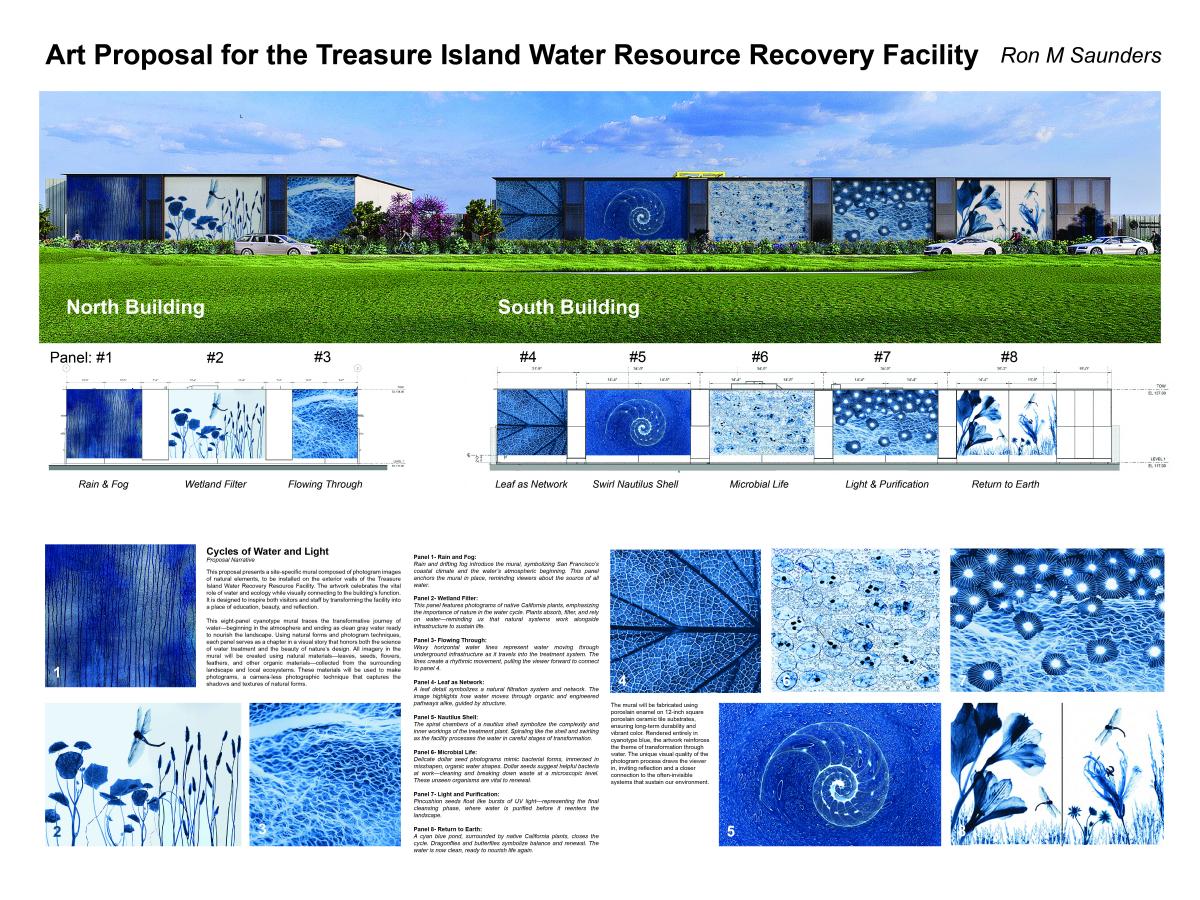 This proposal presents a site-specific mural composed of photogram images of natural elements, to be installed on the exterior walls of the Treasure Island Water Recovery Resource Facility. The artwork celebrates the vital role of water and ecology while visually connecting to the building’s function. It is designed to inspire both visitors and staff by transforming the facility into a place of education, beauty, and reflection.
This proposal presents a site-specific mural composed of photogram images of natural elements, to be installed on the exterior walls of the Treasure Island Water Recovery Resource Facility. The artwork celebrates the vital role of water and ecology while visually connecting to the building’s function. It is designed to inspire both visitors and staff by transforming the facility into a place of education, beauty, and reflection.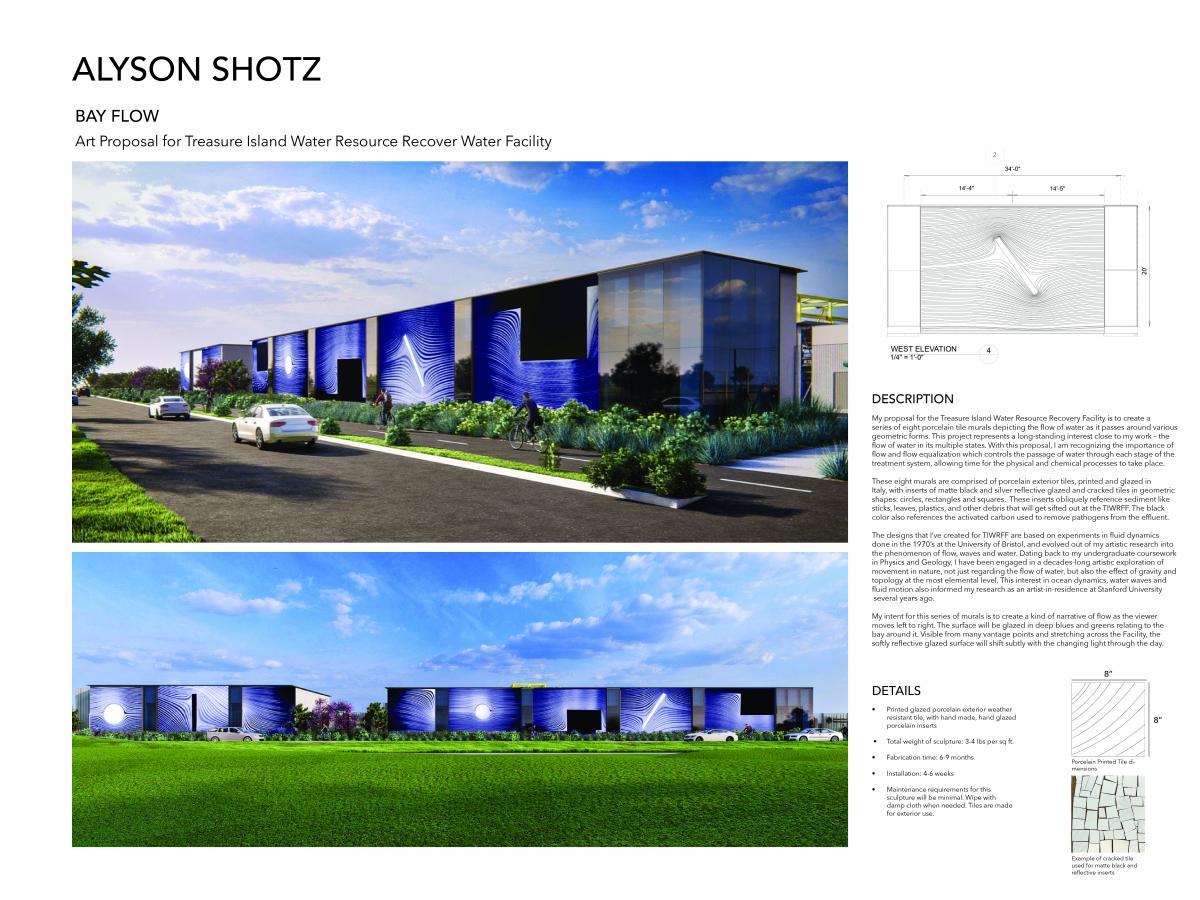 My proposal for the Treasure Island Water Resource Recovery Facility is to create a series of eight porcelain tile murals depicting the flow of water as it passes around various geometric forms. This project represents a long-standing interest close to my work – the flow of water in its multiple states. With this proposal, I am recognizing the importance of flow and flow equalization which controls the passage of water through each stage of the treatment system, allowing time for the physical and chemical processes to take place.
My proposal for the Treasure Island Water Resource Recovery Facility is to create a series of eight porcelain tile murals depicting the flow of water as it passes around various geometric forms. This project represents a long-standing interest close to my work – the flow of water in its multiple states. With this proposal, I am recognizing the importance of flow and flow equalization which controls the passage of water through each stage of the treatment system, allowing time for the physical and chemical processes to take place.
Opportunity For Public Comment
Please take a few minutes to review these artwork proposals and provide feedback. The proposals are available online at www.sfartscommission.org/calendar/proposal-displays, or accessed by the QR Code below, where you can leave feedback in the public comment form. Comments may also be submitted via email to sfacpublicartcomment@sfgov.org by Wednesday, June 25 at 5:00 p.m. PST.
Public comments will be considered by the Review Panel as part of the Final Review Panel meeting where the Panel will recommend one proposal for implementation. Please note that public comments do not constitute a vote.
The Final Review Panel meeting will take place remotely during the last week of June 2025. All Artist Review Panel meetings are open to the public. An agenda for the meeting will be posted 72 hours in advance of the meeting on SFAC’s website under the Public Meeting section: www.sfartscommission.org